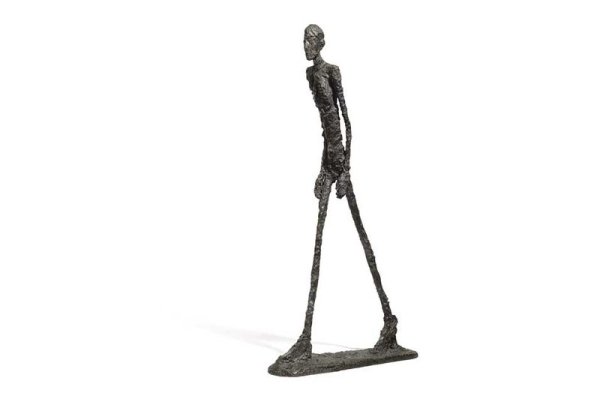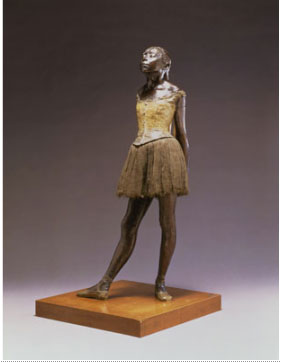Schwarz
View current page
...more recent posts
play plax toys by patrick rylands for trendon
ortega tortilla
play plax via vz
party.jpg
the breaking of a weather underground

For the buyers and their representatives, the Giacometti sale was probably a once in a lifetime opportunity. The sculpture is considered to be one of the most important by the 20th-century Swiss artist.
There was a genuine sense of anticipation in the auction room. Not only could you smell the expensive perfumes and colognes, you could smell the money. Interest in the sculpture was clear from the start with bids being shouted before the auctioneer had even had chance to ask for them. "On your marks, get set, I'm going to start at £9m," said auctioneer Henry Wyndham.
"£12m," came the first bid. "That's my kind of price," said Wyndham.
The figure then rattled up quickly, ping-ponging around the room. In total there were 10 bidders but it came down to two telephone bidders from the mid-£30m mark onwards. When it went from £47m to £50m in a giant leap – what's £3m after all – there were gasps. When the hammer went down, there was loud applause.
The Bauhaus was more than just an idea, of course, it was an actual institution. That institution’s historical background figures in each of these accounts -- to a point. In general, however, what strikes me is how bloodless most descriptions of the Bauhaus are. History appears more or less the way it did at the MoMA show, as a timeline outside the galleries; that is, as ornament, not as integral to understanding the meaning of the artwork. To truly recover the spark of relevance of Bauhaus practice, you need to thoroughly dig into what happened in Germany in the years 1919-1933 -- to put the history back into art history, so to speak.
Four giant facts that loomed over the founding of the Bauhaus in 1919:
* World War I, 1914-1918. The War killed some two million Germans, and left Germany’s economy -- then the world’s second largest -- in shambles. The conflict had begun in 1914 with substantial working-class support, on all sides. It ended with German soldiers in revolt against their officers, and a deep hatred of the leaders who had initiated the hostilities. Many Bauhaus students were veterans of the war. Walter Gropius, its first director, served on the Western Front, was wounded, and won two Iron Crosses.
* The Russian Revolution of 1917. Growing out of war fatigue, a successful Marxist-led revolution on Germany’s doorstep overthrew a much-loathed Czar and replaced him, for heroic moments, with history’s most far-ranging experiment in worker-run government (soon to be strangled by civil war and reaction). The Russian example ignited a wide-spread enthusiasm for social experiment and revolutionary politics, in Germany and elsewhere.
* The German Revolution of 1918. In November, the discredited German Kaiser fled the country; the German Empire became the German Republic. Inspired by the October Revolution, the next months saw power pass over into a woolly collection of grassroots workers and soldiers councils across the country. Authority was soon consolidated, however, in a National Assembly dominated by the disastrously centrist German Social Democratic Party (SPD), socialist in name, but in practice bent on placating a still-monarchist right-wing. The workers council movement, however, persisted -- and was wildly influential with artists; Gropius became head of the architect-led Working Council on the Arts in February 1919, which issued an "Appeal to the Artists of All Countries."
* Months of civil war between a still-monarchist right and a socialist-inspired left in 1918-1919. The police and army were so penetrated by radical agitation that the SPD government fell back on the "Freikorps," irregulars formed from the rump of the German officer corps, to maintain order. In January 1919, a rebellion in Berlin, the "Spartacus Uprising," ended with the murder of the left’s most popular speaker, Karl Liebknecht, and its most capable thinker, Rosa Luxemburg. In February, Freikorps troops used artillery and mass arrests to crush the workers movement in Bremen, on the northwest coast, and the Ruhr, in the west, then went into central Germany to liquidate various organs of popular power. In March, there was another upheaval in Berlin. In April, Bavaria declared itself an independent "Soviet Republic" under workers rule, and was violently put down (becoming subsequently the cradle of Nazism).
These were the cheerful headlines that formed the backdrop for the birth of the Bauhaus. Imagine: Walter Gropius issued the Bauhaus Manifesto in April 1919, when the hope in the new ultra-democratic structures was still running hot, when the post-war economic chaos was acute, when class war was an inescapable fact -- Weimar, where the Bauhaus was to have its home, had recently been sealed off for a radius of 10 kilometers by the government, to secure it against the left!

